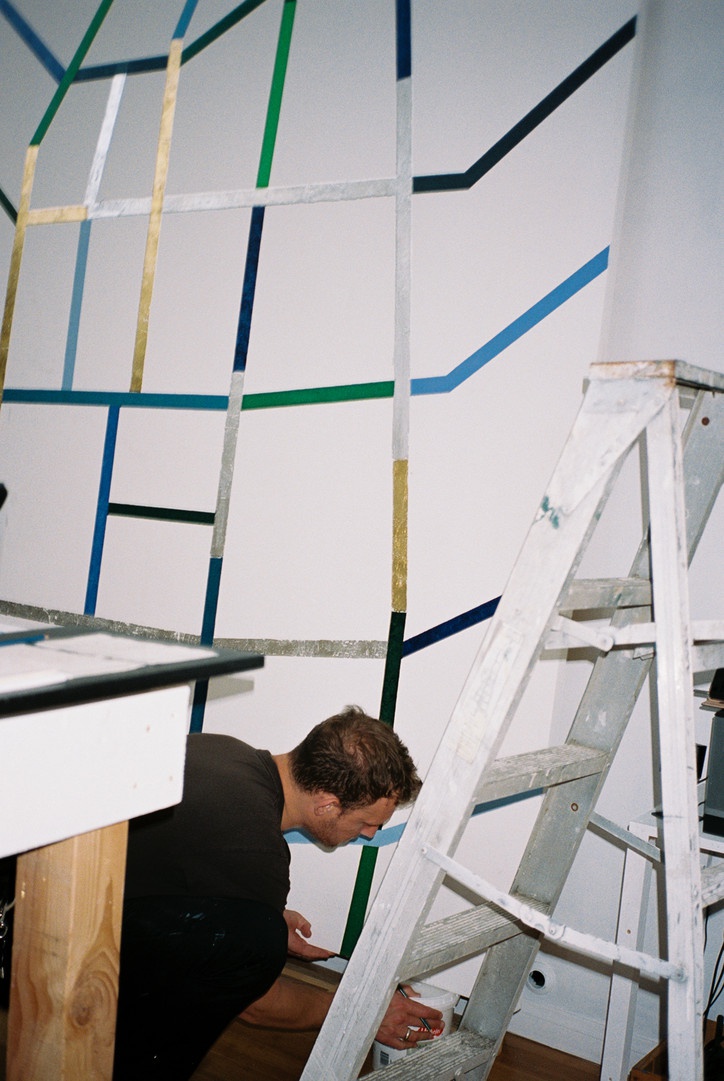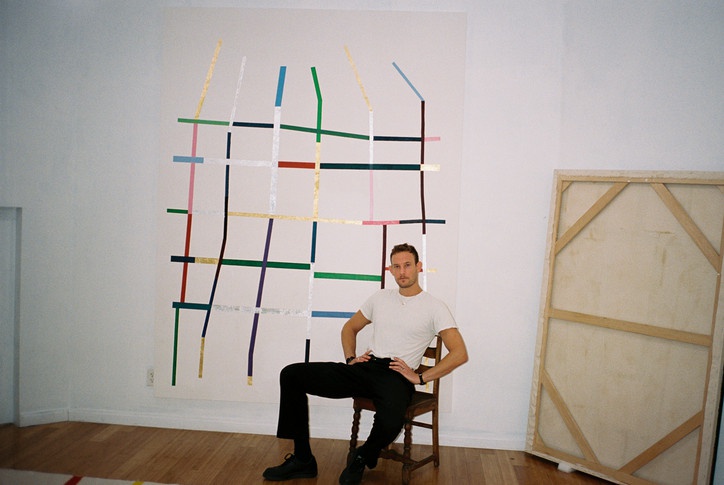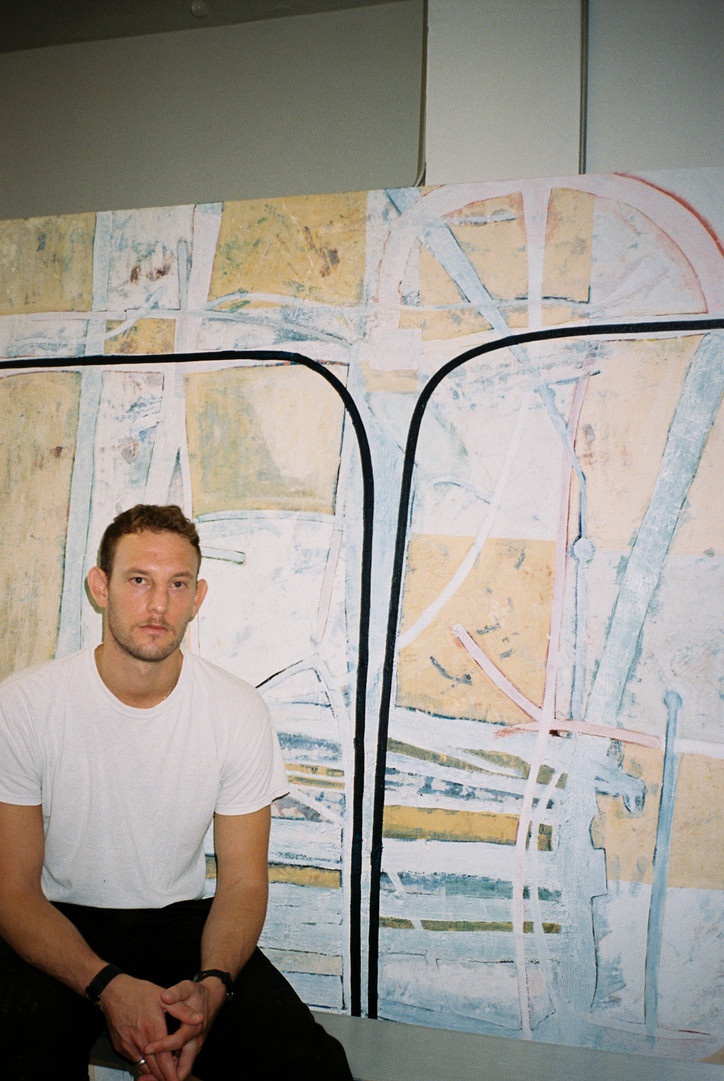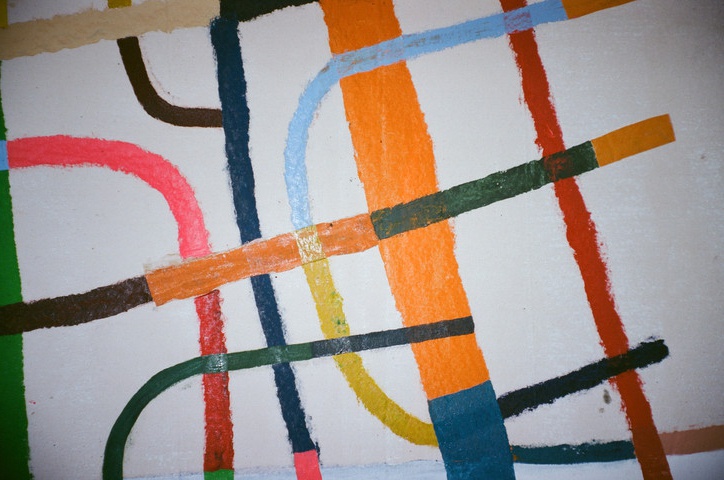Your works in the current show speak to the opiate epidemic and addiction, what’s your relationship to that?
There’s what feels like a very American behavior related to ambition, that results in a need to escape. Even if it’s just a vacation. This country and the world are set up in a way where participation is required but we don't always want to participate inside any of the existing structures. It can feel claustrophobic and ridiculous. Despite the hell of addiction, being a junkie can be a way of opting out, in a very complete way. There’s something about this departure that sticks with me. Making art deals with similar internal and external processes, without the torture part. I’m dealing with this personal history in the work, but I’m also thinking about the ritual of a studio practice, the bliss attached to isolation and real connection, and developing strategies for fulfillment. Do you think you use those themes in your work because it’s cathartic to you personally, or because you want to make a statement on the larger issue? Both. And then I want to question the larger statement.
How much of your work is about personal experience?
If I knew how to avoid personal experience, I’d like to try it, at least once.
Has it always been that way?
Yes. Experience and perception are what we’ve got. I like to present mine, from different angles – Ideally when it somehow feels simultaneously inadequate, shameful, earnest, and hopeful.
How do you feel about the idea that all art comes from pain?
I think as an idea it's a simple error. All art doesn't come from pain - some does. Pain can be exquisitely beautiful, but pain is not more interesting than happiness or pleasure. It may actually be less interesting and immeasurably less sustainable. Also, working from inside serious active pain is not even possible. It can only be mined later. I think it's best to work from a rested, available, grateful, driven place, to access the broadest deepest range of precise emotion. Having said that, it's hard for me to imagine what making art would mean without some periods of profound pain.
What was the first medium you fell in love with?
I really fell in love first with ideas about what a painting could be, more than any medium. And it's stayed that way. Varying media are just tools to realize ideas in my practice. I love the idea not the tool. However, in recent years I've painted mainly with oil paint. Apart from it being so rich and beautiful it seems there's a contemporary notion that oil paint is pretentious or evil in all its superiority - This is appealing to me (to use oil paint despite this) so I'm sort of in love with this bonus. When I first started to paint, I was in love with the idea that a painting could operate between being a picture, and a sign, and a sculpture.


Which artists do you relate to the most, work wise and also, possibly separately, in regards to their story or personal narrative?
The artists I relate to most have been primarily painters who I think approached painting as a unique opportunity for object-hood, ready-made, and a sort of raw materiality. In no specific order: Kounellis, Hesse, Duchamp, Stella, Andre, Bickerton, Johns, Warhol, Ruscha, Sillman, Martin, Mehretu, Ray, Marden. I also relate to designers like McQueen and photographers like Mann and Lorca-Dicorcia. Personal narrative is harder to really know, but my hunch is a lot of time was spent thinking and dreaming about what, fundamentally, a painting, a sculpture, an image is and could be, is shared by all of these artists – something I relate to.
You haven’t always worked in this practice, what were you doing initially, and what changed that made you want to do this?
My practice of making these New England Journal of Medicine works happens alongside my larger scale painting practice in the studio. They have been a way for me to conduct a more urgent feedback loop with the work. Partly because of less labor required to finish them and partly because of the immediacy of concept generation when mixed media is being collaged onto such a pre-activated surface, like that of the Journal. This collision of imagery is exciting and effective, and simply felt like my direct gesture and sensibility. The authority of the NEJM is a compelling container to deal with a wide array of contradiction and exaltation.
How does it feel to put a show up for the public that holds so much of your own story in it?
It feels very good. When a painting is finished, and hanging in a new space, it becomes its own new thing. I relate to it in a more distant way. I walked around this recent show and felt like a viewer discovering something. It's not so sentimental. I like my work to feel like a found object or a ready-made during its creation and at its completion, so by the time the show is up its living a different life. I’m sure I would notice if something was off.
What gives you hope?
Anything, everything. For me, being an artist is the most optimistic and hopeful privilege. Cynicism has always struck me as completely uninteresting and naive. For me, even profoundly hopeless times near death, have resulted in hope. I'm inspired (made hopeful) by so much of life - sadness, a glass of water, humiliation, a song or film, a sandwich or cup of coffee. Mostly small things, but also meeting someone who is smart and warm.
What’s your ritual when you’re in the studio, if you have one?
A few important ones: Obsessive pre-work cleaning, music or podcast on too loud, and a large water or tea close by.
http://officemagazine.net/happy-beginning-middle-and-ending







